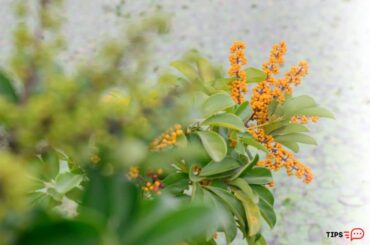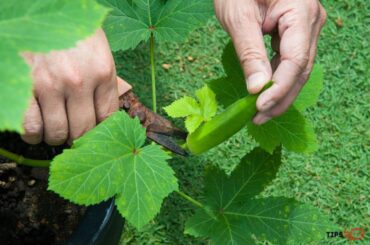How to trim orchid leaves? It’s easy. If you are an orchid lover and wondering how to conduct the trimming of the plants properly , I urge you to read this article as we will be covering it from the beginning.
You can discover how to sterilize the tools, and how to make the cutting in this article. Further we will be covering how to treat them after the trimming too. So let us begin !

How do you cut an damage orchid leaves?
Tools you need
To start off you need to first arrange a sharp cutting tool for this purpose. In fact, you can choose either a pair of scissors or pruning shear to do this task. Alternatively, you may use a kitchen knife, or Razor blade. Besides these you need to arrange rubbing alcohol or another sterilizing supply.
Last but not least you need to arrange paper towels, Antifungal treatment, and Butane kitchen torch to sterilize the shears. It is vital that you sterilize the tools as then you can minimize the potential of having any fungal or bacterial infection. If you have multiple orchid plants to trim, I suggest having separate blades and tools for each plant.
Alternatively, you may sterilize the blades after every trimming and then reuse. You may go ahead with a bleach solution for the sterilization process. Instead of this. You may also use rubbing alcohol for this purpose.
In fact, many hospitals use the rubbing alcohol to sterilize their tools. Apart from that you could also boil your tools and then use them on your orchids. However, what I would recommend you do is to use rubbing alcohol as it will bring you a rapid outcome. You may simply dip the tools in rubbing alcohol and soak it in rubbing alcohol for about thirty seconds.
If you use shears or scissors you need to open them and close them so that it will soak well with rubbing alcohol. Once you complete this activity, you need to place them on a paper towel so that they can wither. In addition to that you could use a kitchen torch and make them go through the flame for some time . it would also disinfect the tools and many people tend to do this as this is a fairly easy process.
If you have wilted leaves or any other disease infected leaves, you need to first decide on the length of the leaves that you need to get rid of.
Identify the damage
If the damage is on a minor level, you could eliminate the affected portion. On the other hand, if the damage is on a massive scale, I recommend getting rid of the entire leaf would be the ideal thing to do. If you wish to snip off only the damaged portion, I suggest cutting it a little further up so that it will eradicate any remaining bacteria.
If you wish to remove the whole leaf, I recommend the best you could do is to cut right at the base where it connects to the stem. When you make the cutting, ensure that you do it with the right plan and do it with caution. Whenever you make a cut it would be traumatizing for the plants to some extent and it requires some time to recover as well. So best is to make a least number of cuttings so that it would make them less traumatized.
Antifungal treatment
Next step would be applying the antifungal treatment. Ensure that you apply the antifungal orchid treatment wherever you make the cuttings. Further you need to refer to the directions on the treatments when you apply them on the plants. Alternatively, you may apply some cinnamon also on the cut places specially if you wish to use a natural option.
However, if you wish to practice this method, ensure that you do not spill any on the healthy leaves. If you do so, it will make the healthy leaves release all the moisture and make them dehydrated. Finally, you need to relocate the orchids where they can gain proper aeration along with low humidity levels. Besides they need to have a temperature range of 65 degrees Fahrenheit – 80 degrees Fahrenheit too.
Once you provide these conditions, it will create a less potential for a further spread of the infection. I recommend refrain from overhead watering so that it would allow the plants to recover. If you end up watering them, it will help to further spread the bacteria. Moreover, do not spill any water on the cut spots on the leaves as well.

Where do you trim orchids?
I recommend trimming the orchid spikes during their dormancy. To elaborate further on this, if your orchids completed the flower blossoming during spring and summer, orchids would be reaching their dormancy after that. However, that doesn’t mean the plants are dead. The reason for that is because they are saving their energy for the next session of the flower blossoming.
In fact, when you trim them, it will help them to rebloom vigorously. However, if you are a fresher into orchid hardening , he would find it challenging to do it precisely. However, if you adhere to the following steps, trimming them precisely would be very easy. First, you need to assess your spikes to start the proceedings as it is very crucial in deciding how you need to do the trimming of the plants.
Usually, the healthy spikes are more like green in color and firm to the touch. On the other hand, the unhealthy plants are brown or yellow in color. Further there could be some orchids which may carry single spike or double spikes as well. Secondly you need to arrange the tools which are clean and sterile. I recommend washing the blades with hot water and with soap.
Next wash them more to remove the soap residue too. if you have non coated tools, you could sterilize them with the flame of a kitchen torch as aforesaid. Thirdly, if you have healthy green spikes, you need to find a node towards the lowest flower bloom and ideally you need to trim one inch above the node.
If you have unhealthy brown spikes, you need to cut them right from the base of the plants. Further if you have double spiked plants, best is to cut one spike at the base of the plants. You need to trim the other spike slightly above the lowest flower node. Ideally you need to cut it one inch above the node.
Finally, you need to maintain the plants well. Once you keep the flower spikes neatly, it would be effective in conserving more energy for the reblooming of the orchids. Additionally , if you expose them for colder weather , it will also help them to rebloom.
Should I cut off limp orchid leaves?
If you ever spot any limp orchid leaves, I recommend the best you could do is to cut them off and remove them from the plants. Generally, if the leaves are firm and green in color, it literally means the plant is in good health.
On the other hand, if the leaves are limp and wilted what I would recommend you to do is to remove it from the plants, but with caution. Unless the bacteria or the fungus which resulted in this condition may spread to other healthy parts of the plants as well.
Do you trim orchids after they bloom?
You could trim the orchids after their bloom if you wish to do so. When you cut it you can cut it back into a node. Other than that, you may either leave the flower spikes or remove them entirely too.
Read Next : Will Orchid Leaves Grow Back? Definitely




